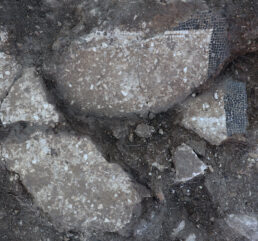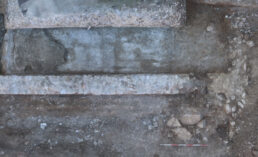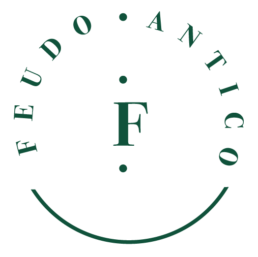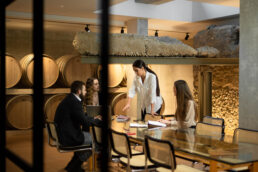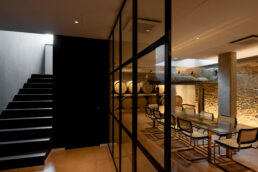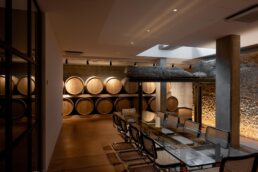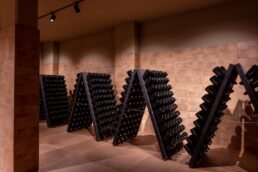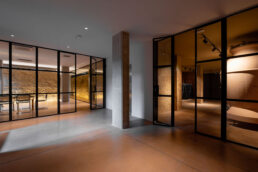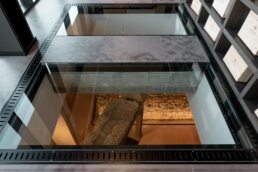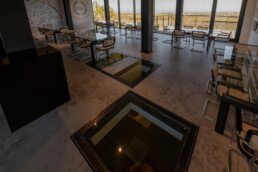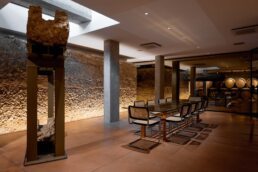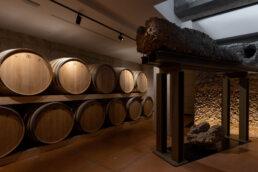Museum of the Roman Villa
The facility was built on the site of an important villa rustica from the Roman Imperial period, whose structure was embedded in the sloping hillside in order to guarantee an excellent view both of the valley and of the sea.

Feudo Antico and the local Archaeological Superintendencehave been working side by side with the aim of giving the remains a new life, preserve the marvellous historical features that gave shape to our facility and give our guests the opportunity to visit the site. The aim is to preserve the wonderful historical features that give shape to our structure and which are an opportunity for our guests to visit. Click on the numbered dots to take a virtual visit to the Roman Villa. Good discovery!

Large cistern
A large cistern in heavy opus caementicium. There are two circular openings at the top (probably for trapdoors), an inlet hole to the south-west connected to the remains of a concrete channel, and another hole to the north-east, which almost certainly acted as an 'overflow', connected to a second channel, the remains of which seem to be connected to a smaller cistern. This large cistern acted as a structural base for a large section of a rural building dating back around the early 20th century, now demolished
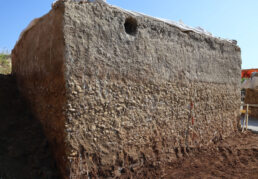
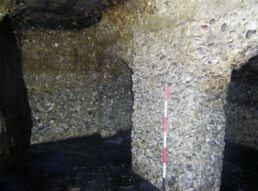

A second smaller cistern
A second, smaller cistern placed on a lower level than the large cistern, perhaps aimed at collecting the excess water from the overflow of the large cistern, to which it seems to be connected by gutters. Nevertheless, only further excavation could clarify its exact mechanism.
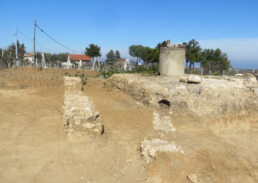

Inclined surface as a base for torcularium
Inclined surface, the base of a torcularium, characterised by an inclined floor lined with impermeable plaster resting on a long wall partially built in opus reticulatum: it was certainly the bottom of a tank aimed at collecting the product resulting from the pressing of olives or grapes. It is probable that nearby, at a higher level, there was a torcularium made of perishable material (i.e. wood) for the production of wine.
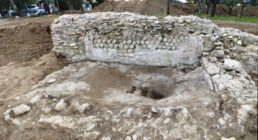

Dolium cell
An axis of 7 dolia housings embedded in a layer of concrete work stands perfectly preserved. Three of these have been excavated, showing that the dolia had already been removed from their housings. A little further to the north, the remains of at least two other dolia chambers, as well as fragments of at least two dolia are visible. In the same area, there are at least 5 circular pits directly dug into the ground: three of these have been emptied, revealing fragments of comb ceramic pottery (medieval) and possible remains of seeds and grains, indicating a different phase of the complex’s life.
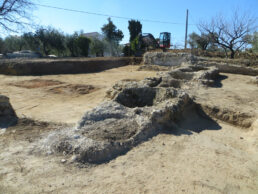
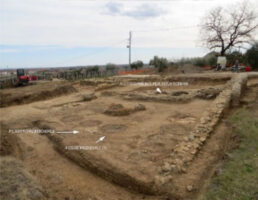

Rectangular pits
Rectangular pits, filled with debris from the demolition of Roman structures (such as cubilia of opus reticulatum and sandstone slabs, one of which could have been a doorway). These remains were mixed with abundant red burnt soil which clearly indicates the effect of some kind of heat source. This is likely to be related to a post-classical, possibly medieval, activity linked to demolition and lime-making operations, although the main assumption is that the two rectangular pits were filled with material that had been subjected to heat elsewhere.

Late Antique strata
Late Antique strata devastated during the 20th century, mark the remains of what we think were structures made of labile material (pebbles, lime, etc.), poorly preserved as they were subjected both to breakthroughs for planting vines and to the explosion of Second World War devices, as shown by the presence of weapon-type brass and iron shards. Given the presence of Sigillata Africana and band-painted pottery (locally known as 'Crecchio type'), it is likely that here stood a structure dating back to the late period (5th-6th century AD).
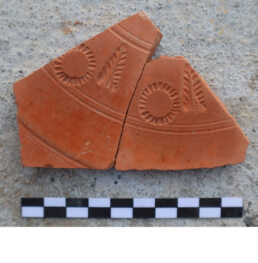

Room 1
Room 1, a room entirely embedded in the hillside still containing at least 1m of untouched stratigraphy. A simple surface cleaning revealed an impressive amount of ceramic fragments (including Italic and African Sigillata) and at least one coin (probably depicting the Roman emperor Probus).
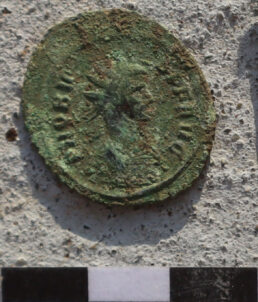

Basin and mosaic room
n March 2021, an impermeable plaster basin was found on the eastern side of the cistern, together with a fragment of mosaic flooring made of white limestone tesserae framed by a band of black tiles. Given the presence of the nearby mosaic room, it is possible that this tank may not have had a purely productive function, and that it may have acted as a basin for a spring.Are you a history enthusiast? We offer a special tour aimed at exploring the archaeological findings and discoveries.
